Abstract
Canadian isolates of Leptosphaeria maculans, the causal agent of blackleg of crucifers, were examined for genetic relatedness by the random amplified polymorphic DNA assay. DNA polymorphisms amplified with random decamer primers were used to distinguish three groups of isolates. Group 1 contained all isolates of the virulent pathotype, group 2 contained isolates of the avirulent pathotype from western Canada, and group 3 contained avirulent pathotype isolates from Ontario. These results agreed with other reports which showed many genetic differences between pathotypes and were consistent with the hypothesis that the virulent pathotype was recently introduced into Canada and has diverged relatively little. In contrast, the avirulent pathotype has probably been present in Canada for a longer time and has diverged with geographic isolation. In addition to establishing genetic relationships, DNA fingerprints generated by the random amplified polymorphic DNA assay have potential applications in pathotype identification and blackleg disease management.
Full text
PDF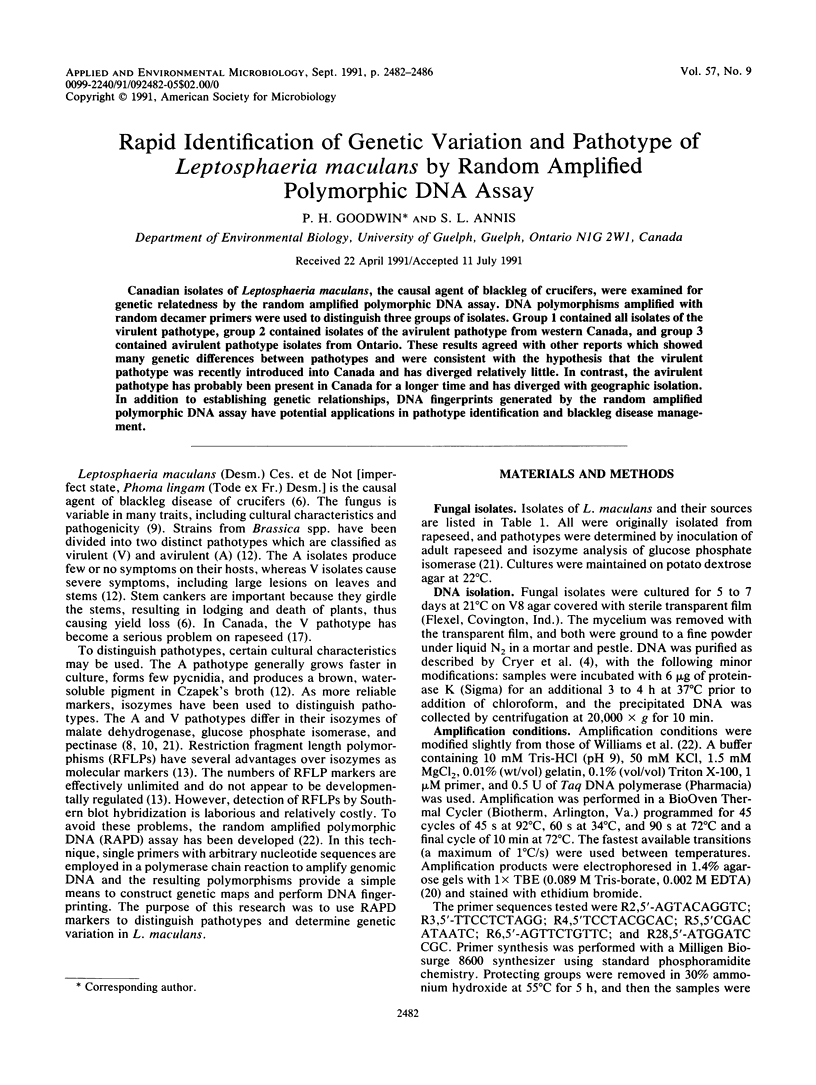
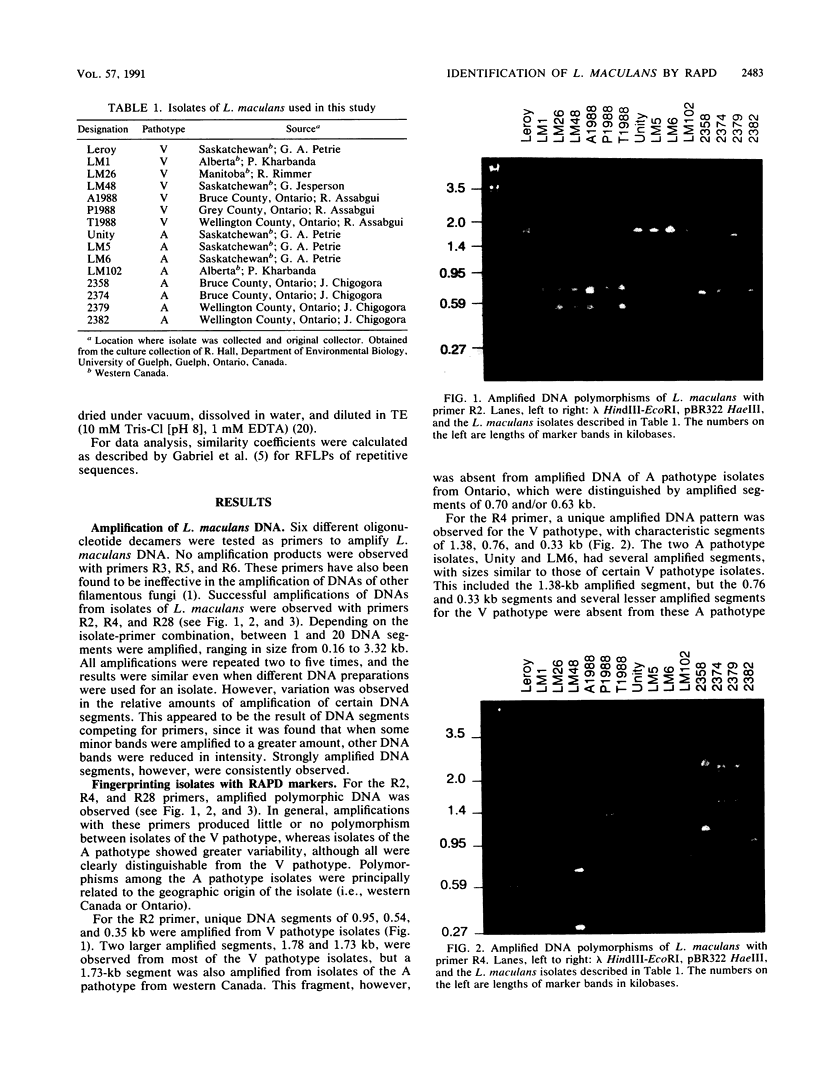
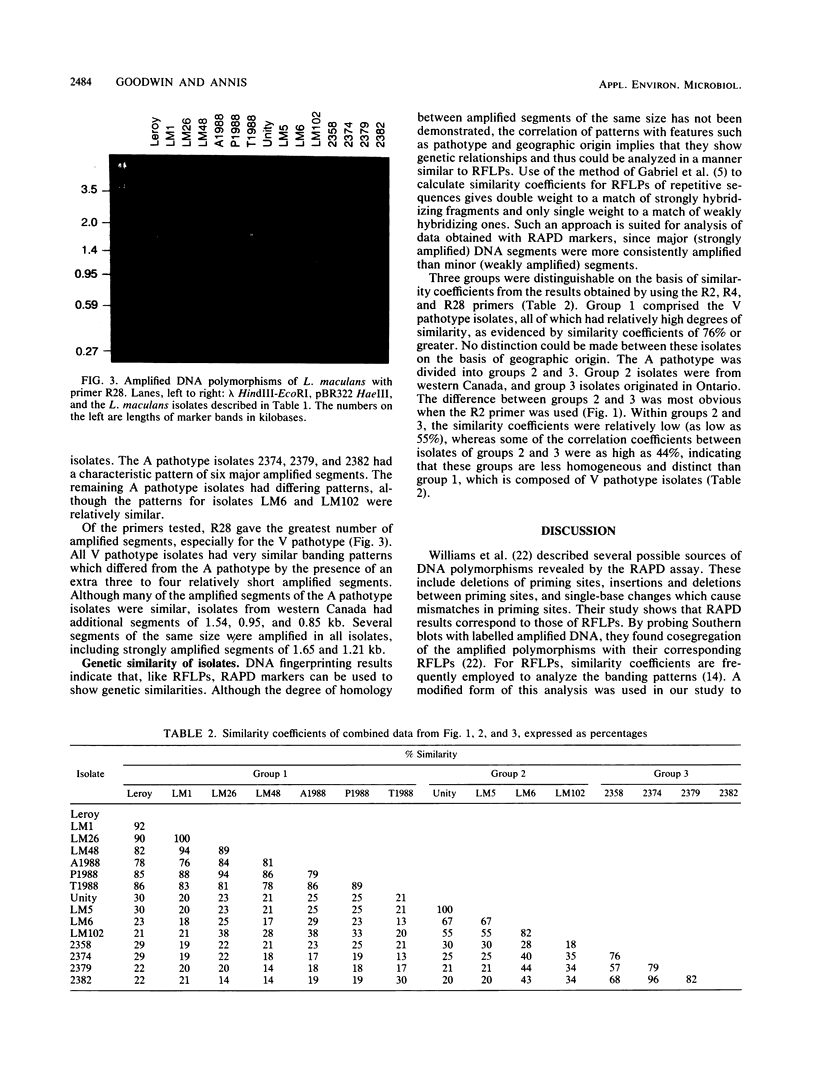
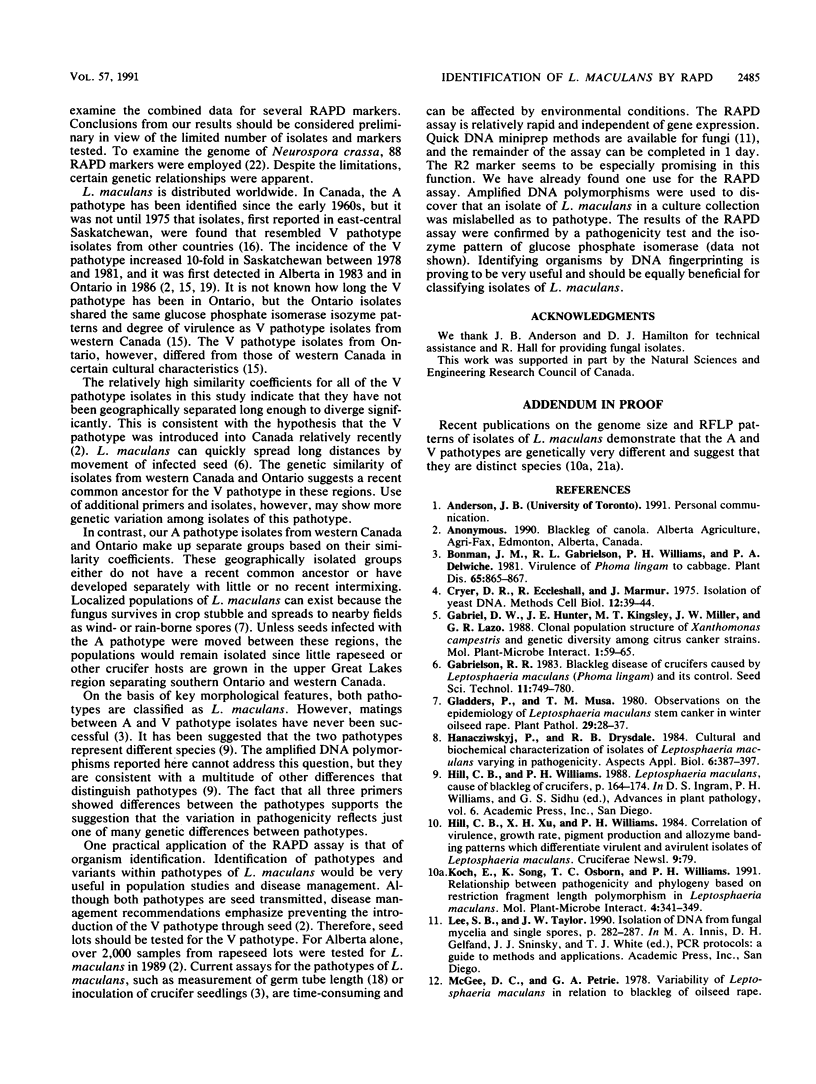
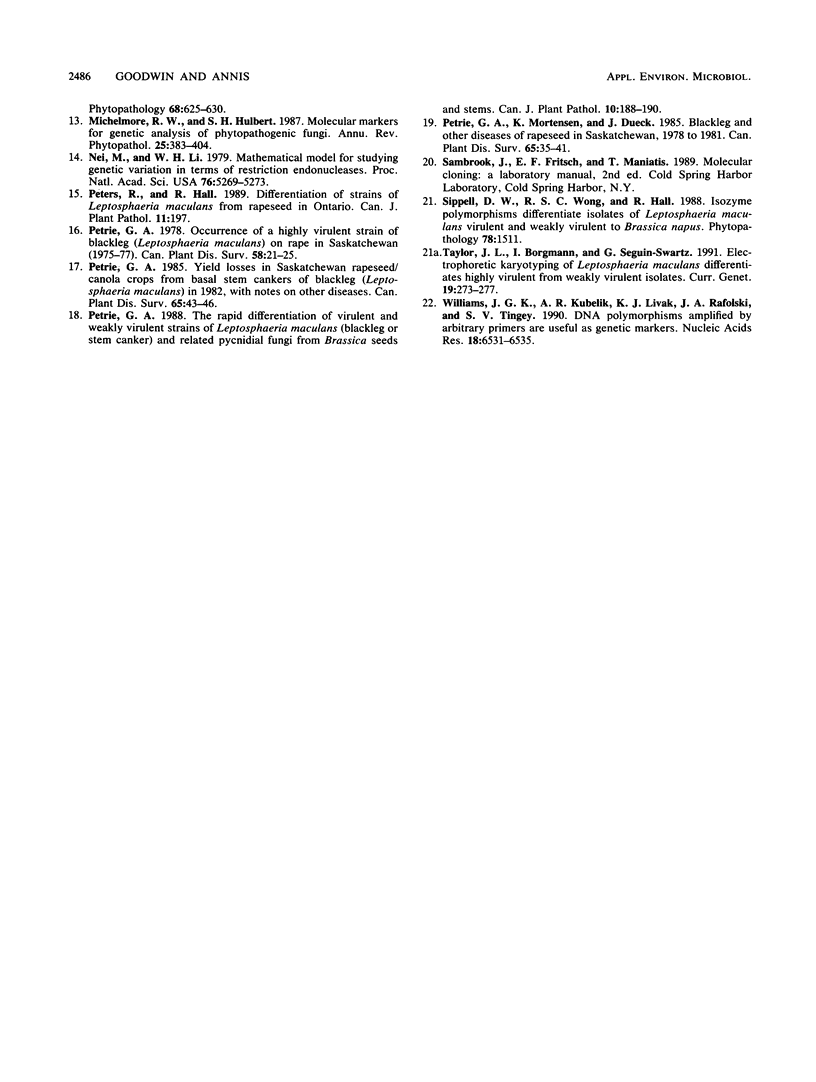
Images in this article
Selected References
These references are in PubMed. This may not be the complete list of references from this article.
- Cryer D. R., Eccleshall R., Marmur J. Isolation of yeast DNA. Methods Cell Biol. 1975;12:39–44. doi: 10.1016/s0091-679x(08)60950-4. [DOI] [PubMed] [Google Scholar]
- Nei M., Li W. H. Mathematical model for studying genetic variation in terms of restriction endonucleases. Proc Natl Acad Sci U S A. 1979 Oct;76(10):5269–5273. doi: 10.1073/pnas.76.10.5269. [DOI] [PMC free article] [PubMed] [Google Scholar]
- Williams J. G., Kubelik A. R., Livak K. J., Rafalski J. A., Tingey S. V. DNA polymorphisms amplified by arbitrary primers are useful as genetic markers. Nucleic Acids Res. 1990 Nov 25;18(22):6531–6535. doi: 10.1093/nar/18.22.6531. [DOI] [PMC free article] [PubMed] [Google Scholar]





